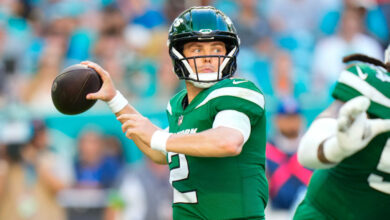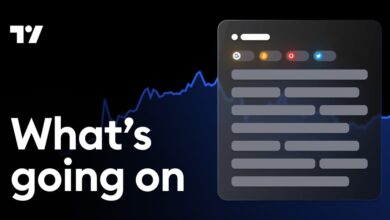Why Patriots should beware of trading for No. 1 pick in 2024 NFL Draft – NBC Sports Boston

Since the Jimmy Johnson draft value chart became ubiquitous in the early 1990s, teams have gotten much smarter about the value of the No. 1 overall pick.
The first time anyone traded it, in 1967, the Colts dealt nondescript quarterback Gary Cuozzo (lifetime record: 1-2) to the expansion Saints for veteran center Bill Curry and the rights to defensive tackle Bubba Smith. Smith became an All-Pro and Miller Lite pitchman, Curry made the Pro Bowl, and both helped the Colts win Super Bowl V.
Cuozzo, meanwhile, went 3-7 in his only season with the Saints before eventually retiring to become a dentist.
Needless to say, no one is trading the No. 1 pick for an expert in orthodontics anymore. The days of the Cowboys sending a couple of bums to the Oilers for the rights to legendary defensive end Ed “Too Tall” Jones (and future Pro Bowl quarterback Danny White, for that matter) are over, too.
If a team moves up to No. 1, it’s for one position, and that’s quarterback. The last time anyone traded up for anyone else was 1997, when the Rams chose tackle Orlando Pace, who went on to a Hall of Fame career. (Strangely enough, the Jets traded the No. 6 pick they received and it eventually became another Hall of Fame tackle, Seattle’s Walter Jones, which is a very Jets thing to do).
🔊 Patriots Talk: The case for the Patriots trading down | Listen & Subscribe | Watch on YouTube
It’s worth examining the history of No. 1 trades because the Patriots are in a position to be aggressive if they believe that USC’s Caleb Williams is a can’t-miss prospect. Caution is in order, however, because if there’s one factor largely connecting the last six such deals since 1991, it’s that the pick is usually traded when the draft lacks an obvious home run choice at No. 1.
Put another way, the Colts weren’t trading the pick in 1998 with Peyton Manning on the board, Cincinnati didn’t entertain offers in 2020 with Joe Burrow available, and the Jaguars were happy to stay put and draft Trevor Lawrence in 2021.
The No. 1 pick is easier to move when there’s doubt about the quality of the top prospect, like last year’s disastrous decision by the Panthers to take disappointing quarterback Bryce Young. Carolina dealt the pick that became this year’s No. 1, leaving the Bears in control of the draft.
Chicago can deal young QB Justin Fields and take Williams, it can keep Fields and go for playmaking wide receiver Marvin Harrison Jr., or it can trade down to, say, the Patriots at No. 3 and still get a quarterback while amassing other picks.
The question is Williams. No one doubts his pure talent, but there are questions about his makeup, his leadership, and the fact that USC surprisingly struggled against top-tier competition during his tenure. We might look back at him as particularly unworthy of that selection.
That’s for the Bears, and maybe Patriots, to decide. For a better idea of what these trades usually yield, let’s run through the most recent examples.
Year: 2023
Teams: Bears to Panthers
No. 1 pick: QB Bryce Young
Deal: Bears traded WR DJ Moore, 2023 first-rounder (No. 9, later traded), 2023 second-rounder (No. 61, later traded), 2024 first-rounder (No. 1), 2025 second-rounder.
Evaluation: Is it too early to label this one of the worst deals ever? Moore is a legit No. 1 receiver who just topped 1,300 yards, Young threw nearly as many interceptions (10) as touchdowns (11) while winning only two games, and the Panthers were so bad, that 2024 first-rounder they sent the Bears just became No. 1 overall. This is the absolute worst-case scenario.
Year: 2016
Teams: Titans to Rams
No. 1 pick: QB Jared Goff
Deal: Rams traded 2016 first-rounder (No. 15, later traded), 2016 second-rounder (No. 43, DT Austin Johnson), 2016 second-rounder (No. 45, RB Derrick Henry), 2016 third-rounder (No. 76, later traded), 2017 first-rounder (No. 5, WR Corey Davis), 2017 third-rounder (No. 100, TE Jonnu Smith).
Titans traded No. 1 pick, as well as 2016 fourth-rounder (No. 113, later traded), 2016 sixth-rounder (No. 177, TE Temarrick Hemingway)
Evaluation: Goff took the Rams to a Super Bowl and the Lions to an NFC title game that ended in an epic collapse not really of his making, but only in the last two years has he made believers of the skeptics who considered him a product of Sean McVay’s creative offense.
The Titans, meanwhile, turned Henry into the best running back in football, riding him to the 2019 AFC title game. They also swapped one of the picks acquired in the deal to land All-Pro offensive tackle Jack Conklin. All told, this was either a wash or a slight Titans win.

Year: 2001
Teams: Chargers to Falcons
No. 1 pick: QB Michael Vick
Deal: Falcons traded WR Tim Dwight, 2001 first-rounder (No. 5, RB LaDainian Tomlinson), 2021 third-rounder (No. 67, DB Tay Cody), 2002 second-round pick (No. 48, WR Reche Caldwell).
Evaluation: Here’s the one exception. Everyone knew Vick was the most talented player in the 2001 draft, but fewer believed a running quarterback could survive and thrive in the league at that time. (Vick would obviously change that thinking.) The Chargers wanted him, but couldn’t agree to terms ahead of the draft, so they shockingly sent him to Atlanta, where he became one of the league’s most electrifying talents.
The Chargers had no regrets, because they used the fifth pick on Tomlinson, one of the best running backs of the decade, and their second-rounder on quarterback Drew Brees.
Year: 1997
Teams: Jets to Rams
No. 1 pick: OT Orlando Pace
Deal: Rams traded 1997 first-rounder (No. 6; later traded), 1997 third-rounder (No. 67, later traded), 1997 fourth-rounder (No. 102, DE Terry Day), 1997 seventh-rounder (No. 207, later traded)
Evaluation: The Rams got the Hall of Famer. The Jets got two-time Pro Bowl linebacker James Farrior, bypassing Hall of Fame tight end Tony Gonzalez and yet another stud tackle, Indy’s Tarik Glenn. In a draft without a top-tier quarterback, the Rams nailed the pick.
Year: 1995
Teams: Panthers to Bengals
No. 1 pick: RB Ki-Jana Carter
Deal: Bengals traded 1995 first-rounder (No. 5, QB Kerry Collins), 1995 second-rounder (No. 36, DE Shawn King)
Evaluation: Trading up for a running back would never happen now, but Carter had just finished second in the Heisman voting.
What’s more shocking than the pick – Carter blew out his knee early in his Bengals career and was never a factor – was the meager return. It’s hard to imagine the No. 1 pick only fetching two picks in return today.

Year: 1991
Teams: Patriots to Cowboys
No. 1 pick: DT Russell Maryland
Deal: Cowboys traded 1991 first-rounder (No. 11, T Pat Harlow), 1991 second-rounder (No. 41, DB Jerome Henderson), and three players (CB Ron Francis, LB David Howard, LB Eugene Lockhart Jr.)
Evaluation: We end here not because the trade holds any particular relevance in today’s NFL, but because it involved the Pats. If ever there was a year to trade down, this was it, but the Patriots whiffed on the return. T
The players they received from the Cowboys made zero impact, and Harlow was nothing more than a solid right tackle. Maryland didn’t ultimately live up to expectations in Dallas, but the Cowboys had remarkably little to choose from, because the best players in that draft went in the second (Brett Favre) and third (Aeneas Williams) rounds.




